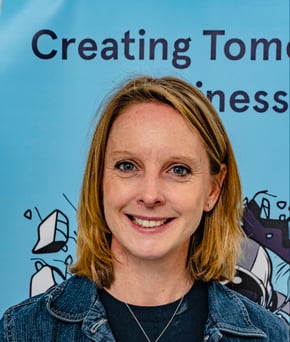Product Strategy – Can You Do It in a Week?
Short answer: yes.
When starting a role as a product leader in a new company, the sensible advice seems to be to take your time: talk to lots of customers, meet the team, and build those important relationships before making changes.
But when it comes to product strategy, I have a different perspective. Crafting a strategy doesn’t need to be a long and laborious process. It's should be about progress over perfection.
In fact, a fresh perspective not tainted by agendas or knowing too much can block out the noise and help you focus on what matters most: insight from customers.
Keep it as a set of hypotheses and be clear on what is informed by insight and where there are open questions that need exploration and validation.
Here is how I would outline the thinking in Miro (or your tool of choice) to get started:
-
Market Landscape
- Trends that Impact This Market: What are the current trends that could influence your market? What are you reading about in the papers or on social media? Regulatory changes, digital adoption, cost of living, scams, and privacy concerns are some of the current trends. Do these impact your product?
-
Customer Segments
- Who Are They and What Are Their Needs: What are your customer segments? Please segment. Warning: if you speak to people in your organisation and they tell you that your product is for everyone, while that may be true, being able to focus on a target segment, understanding their specific needs will give you the best chance of achieving product-market fit and sustained product success.
-
Competitors
- Who Are They and Where Are They Winning: Analyse your competitors to understand their strengths and weaknesses. Identify the areas where they are succeeding and the gaps they might be leaving open. This competitive analysis helps in positioning your product uniquely and capitalizing on untapped opportunities.
- How will you solve a problem or meet a need in a better or different way than is being done today?
-
Product Experience
- Mapping Out Key Journeys: If you or your team are familiar users of the product, map out key customer journeys. Take some screenshots that show how you complete a workflow and ask if this is a good experience. Identify pain points and areas for improvement to enhance user satisfaction and engagement.
-
Customer Sentiment
- Utilizing Transcripts and AI Tools: Gather transcripts from existing customer interviews to gain insights into customer sentiment. Upload these into a large language model (LLM) for analysis but tread with caution. You should get a steer in the right direction, but speaking to customers yourself or reading the transcript in full will give you a better picture than any Chat GPT interaction will do.
- If you are using an LLM, make sure you ask it for verbatim feedback to understand genuine customer issues and reduce hallucinations. This helps in identifying barriers to adoption and areas needing improvement.
- Path to Adoption: Evaluate whether your product works seamlessly with other tools or if it aims to be an all-in-one solution. Understand the path to adoption, as change is hard, especially when there are integrations.
-
Commercials
- Revenue Opportunities and Market Landscape: Identify where the revenue opportunities lie and assess the difficulty in unlocking these opportunities. Where are those fast-flowing streams (refer back to the market landscape) that offer high potential for revenue growth?
-
Hypothesis-Driven Strategy
- Formulating Hypotheses: Based on the gathered insights, formulate hypotheses about what the actions you could take are and the outcomes they will deliver. Identify what is validated and where there are open questions. Outline how you will find the answers to these questions through further research, testing, and customer feedback.
Strategy doesn't have to be a lengthy and arduous process. You don't need to have all the answers to get started. You do need to understand customer needs and it sure helps to have a thought partner to challenge ideas and synthesize the insights.

